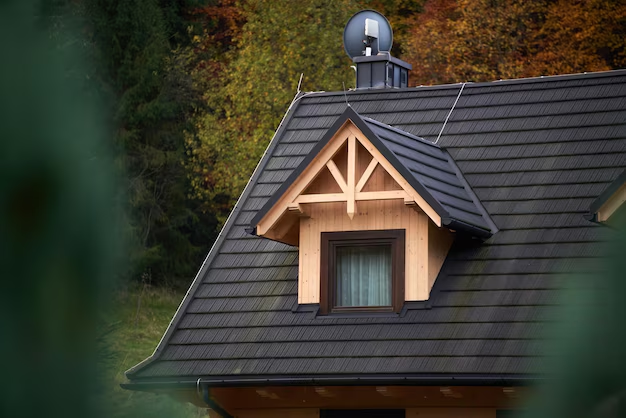Understanding Roof Pitches: What You Need to Know
When living under a roof, it's easy to overlook the importance of the roof pitch—that angled structure poised above us. However, understanding roof pitches can be crucial for everything from construction and home renovations to energy efficiency and even financial planning. But what exactly are roof pitches, and why should you care?
What Is a Roof Pitch?
At its core, a roof pitch refers to the angle or steepness of a roof. It's often expressed as a ratio, reflecting the number of inches a roof rises vertically for every foot (12 inches) it extends horizontally. For example, a 4:12 pitch rises 4 inches for every 12 inches of horizontal run.
Why Roof Pitch Matters
Weather Resistance: A steeper pitch helps in shedding rain and snow more effectively, reducing the risk of water damage and leaks.
Aesthetic Appeal: The steepness can significantly affect the architectural style of a building, contributing to its overall curb appeal.
Energy Efficiency: The angle can impact insulation and ventilation, influencing temperature regulation and energy bills.
Durability: A properly pitched roof can extend the lifespan of roofing materials by preventing water pooling and debris accumulation.
Practical Implications of Roof Pitch
Construction and Renovation
When designing or renovating a home, the roof pitch determines what types of materials are suitable. For example, a low-pitched roof might work with rubber or metal roofing, while shingles are ideal for steeper roofs. Understanding these materials can help in making cost-effective decisions during construction.
Financial Considerations
Roof pitch also plays a role in cost implications. For instance:
- Steeper roofs might require more materials and labor, increasing initial costs.
- However, they can offer savings in the long term due to better water runoff and a reduced need for repair.
Investing in a well-pitched roof can also enhance property value, a significant factor if you're considering refinancing or selling your home.
Accessing Financial Resources for Roofing Projects
Embarking on roofing projects might seem daunting financially. Fortunately, there are numerous financial assistance programs and grants aimed at easing this burden.
Possible Financial Support Options
Government Aid Programs: Look into federal or state-funded programs that offer help for home improvements, especially those focused on energy efficiency upgrades.
Home Improvement Loans: Many banks and financial institutions provide competitive loans specifically for home renovation projects, including roofing.
Tax Credits: Energy-efficient roofing might make you eligible for tax credits, reducing the overall cost significantly.
Insurance Adjustments: Consult with your insurance provider to explore potential premium reductions resulting from roofing upgrades.
Related Financial and Educational Opportunities
🔹 Federal Housing Administration (FHA) Loans: Special loan programs designed to assist homeowners with repair and renovation costs.
🔹 Energy-Efficient Mortgage (EEM): Incorporates the cost of energy-saving improvements into mortgage financing.
🔹 Weatherization Assistance Program: Helps low-income households increase energy efficiency, which might cover roofing updates.
🔹 Local School Grants and Workshops: Check with community colleges or educational institutions about workshops or certification courses for DIY roofing to save labor costs.
Understanding the intricacies of roof pitches not only enriches your knowledge as a homeowner but opens up pathways for financial improvements and strategically enhances the living conditions within your home. Whether you’re planning a renovation or just want to evaluate the current state of your property, considering the roof’s pitch is always a wise move.
